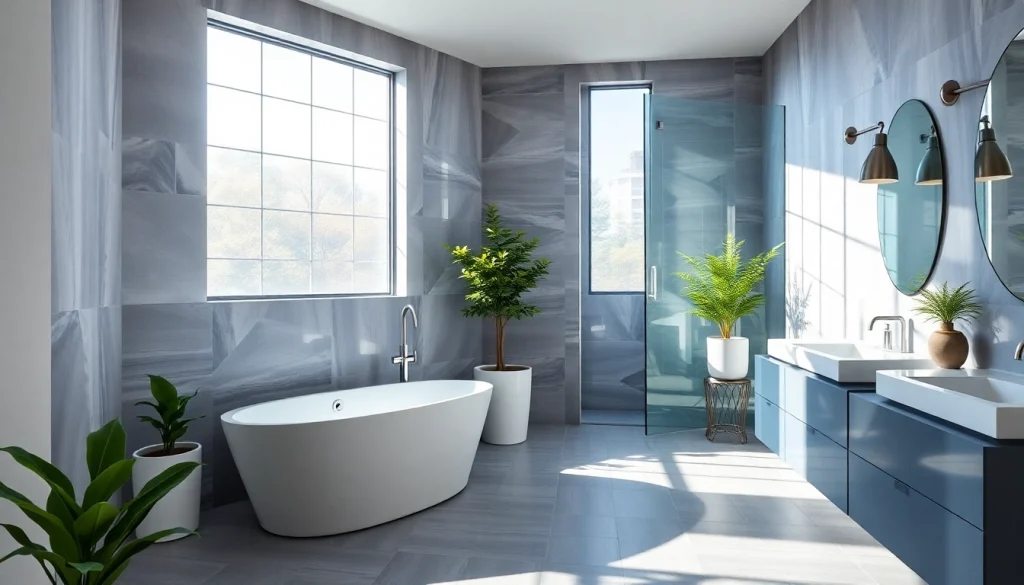
Understanding the Role of a Bathroom Remodeling Contractor
Embarking on a bathroom remodeling project can be an exciting but daunting task. The key to a successful renovation ultimately lies in hiring the right professional to guide you through the complexities of the process. A bathroom remodeling contractor plays a vital role in bringing your vision to life, managing everything from design to execution. In this article, we will delve into the importance of a dedicated contractor and outline how to choose the best one for your project.
What Does a Bathroom Remodeling Contractor Do?
A bathroom remodeling contractor is a specialized professional who manages the renovation of bathrooms. Their responsibilities typically include:
- Design consultation: Assessing your needs and preferences to create a tailored design.
- Project management: Coordinating various tradespeople such as plumbers, electricians, and tile installers.
- Permits and inspections: Ensuring that all necessary permits are obtained and inspections are passed in compliance with local building codes.
- Budget management: Helping you set a budget and ensuring that the project remains within financial constraints.
- Quality assurance: Overseeing the quality of work to guarantee that it meets industry standards.
Key Qualifications of a Good Contractor
Not all contractors are created equal. Here are essential qualifications to seek:
- Licensing and insurance: A reputable contractor should be licensed and carry insurance, protecting both you and the workers.
- Experience: Look for a contractor with extensive experience in bathroom renovations, particularly those similar to your project.
- References: Request references or testimonials from past clients to gauge their satisfaction with the contractor’s work.
- Communication skills: Your contractor should be adept at clear communication, keeping you informed at every stage of the project.
Common Services Offered by Bathroom Remodeling Contractors
Services provided may vary depending on the contractor, but many will offer a wide range of options, including:
- Full renovations: Complete overhaul of the bathroom, including layout changes, fixture upgrades, and cosmetic enhancements.
- Partial remodels: Updating individual elements, such as vanity replacement, tiling, or plumbing upgrades.
- Accessibility modifications: Installing grab bars, walk-in tubs, or barrier-free showers for improved accessibility.
- Low-flow fixtures: Upgrading toilets, showers, and faucets to reduce water usage and lower bills.
How to Choose the Right Bathroom Remodeling Contractor
Choosing the right contractor requires vigilance and research. This section outlines a comprehensive approach to selecting the best fit for your project.
Researching Potential Contractors
Start your search by gathering a list of potential bathroom remodeling contractors in your area. Utilize online reviews, word-of-mouth referrals, and platforms like Angi or Yelp to identify candidates.
Reading Reviews and Testimonials
Once you’ve compiled a list, take the time to read through reviews and testimonials. Pay attention to comments about:
- Quality of work
- Timeliness of project completion
- Professionalism and communication
- Ability to stay within budget
Interviewing Candidates and Asking the Right Questions
Conduct interviews with your top candidates to better assess their qualifications. Prepare a list of questions, including:
- What is your experience with bathroom remodeling?
- Can you provide references from recent clients?
- What is your estimated timeline for completion?
- How do you handle unexpected issues or delays?
Planning Your Bathroom Remodel
Once you’ve chosen a contractor, it’s time to turn your attention to the planning phase of your remodel. Proper planning ensures a smoother process and limits surprises.
Setting a Realistic Budget
Establishing a realistic budget early on is crucial. Consider the following steps to set your financial parameters:
- Evaluate your current finances and determine how much you can comfortably spend.
- Account for all costs, including labor, materials, permits, and unexpected expenses- a good rule of thumb is to allocate an additional 10-20% for contingencies.
- Gather bids from multiple contractors to understand market pricing.
Design Considerations for Your New Bathroom
Your bathroom design should balance aesthetics with functionality. Consider the following:
- Layout: Decide whether you want to maintain the existing layout or consider a new configuration for improved functionality.
- Style: Determine your preferred style, whether it’s modern, traditional, or a mix- and consider how it will blend with the rest of your home.
- Fixtures: Research and select high-quality, durable fixtures that are capable of withstanding daily use.
- Lighting: Invest in sufficient lighting options for both functionality and ambiance.
Understanding the Remodeling Process
Having a clear understanding of the remodeling process can help set expectations. Typically, the steps include:
- Demolition of existing structures
- Plumbing and electrical updates if necessary
- Framing and drywall installation
- Tiling and fixture installation
- Finishing touches and final inspection
Essential Tips for a Successful Bathroom Renovation
To ensure your bathroom remodel is successful, keep these practical tips in mind.
Staying on Schedule: Communication is Key
Maintain open lines of communication with your contractor throughout the project. Schedule regular updates to ensure the project is on track and address any concerns promptly.
Overcoming Common Remodeling Challenges
Challenges may arise during a renovation, but being proactive can save the day. Common issues include:
- Delays: Weather, supply chain issues, or availability of subcontractors can slow down progress. Stay flexible and work with your contractor to adapt to changes.
- Budget overruns: Ensure you have a clear agreement with your contractor on what is included in the budget and avoid unnecessary changes mid-project.
- Design mismatches: Regularly review design elements as they come together to confirm you’re aligned with your vision.
Final Inspection: Ensuring Quality Work
Upon project completion, conduct a final walkthrough with your contractor. Check for quality and adherence to your original specifications, including:
- Fixture installation
- Leaking or malfunctioning plumbing
- Plumbing and electrical connections
- Overall finish and cleanliness
Post-Renovation: Maintaining Your New Bathroom
The completion of your remodel doesn’t mark the end of your relationship with your contractor. Ongoing maintenance is essential to keep your bathroom in peak condition.
Tips for Ongoing Maintenance
Regular upkeep can help reduce wear and tear on your newly renovated bathroom. Consider these tips:
- Regularly inspect caulking and grout for cracks and deterioration to prevent water damage.
- Keep fixtures clean and free from mineral buildup, especially in hard water areas.
- Establish a routine for checking plumbing and electrical systems to catch potential issues early.
When to Call Your Bathroom Remodeling Contractor Again
There are instances where you might need to reach back out to your contractor, including:
- If you notice leaks, mold, or other signs of water damage
- When contemplating further upgrades or expansions
- If you’re planning to sell your home and need advice on enhancing value
Enhancing Value: The Benefits of Regular Upkeep
Regular maintenance does more than just preserve your bathroom; it enhances its value. A well-maintained bathroom can significantly appeal to potential buyers, making it a worthy investment in the longevity of your home.






